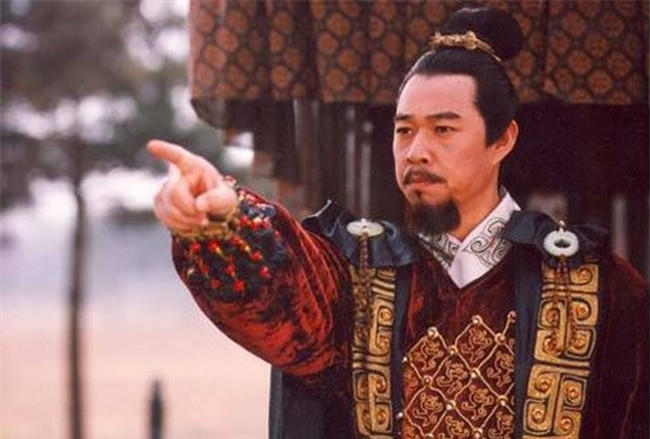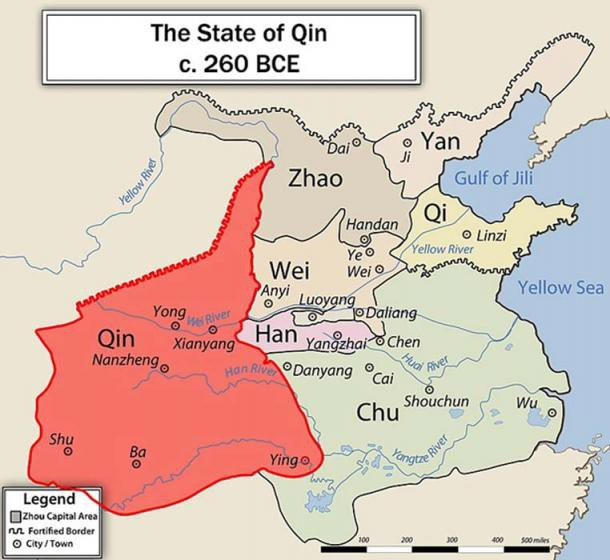The ultimate power helps Qin Shihuang to unify China
Uniting the world and becoming the first emperor in Chinese history, the latter always questioned the ultimate power of.
According to Ancient Origins, the Qin Dynasty was the first tyrannical monarchy in Chinese history. This dynasty played a particularly important role because it was the first time that China attributed a term, laying the foundations for the emergence of world wonders as good.

Image of Qin Shihuang in Chinese TV series.
Before Qin Shihuang unified China, China was divided into seven countries under the Warring States period. At the end of this period, Qin Shihuang succeeded in conquering all the remaining forces, making him the first emperor in Chinese history.
Qin Shihuang intended the dynasty he ruled would last for 10,000 generations (meaning forever and ever), but in fact, the Qin Dynasty only existed in less than two decades.
It can be said that the Qin Dynasty and especially the first emperor in Chinese history still bring far-reaching influences to this day.
The ultimate power of Qin Shihuang
According to historians, there are many factors that lead to Qin Shihuang's success. One of them is a geographic strategic position.
The country of Qin originated in Shaanxi Province, surrounded by mountains, to help protect the eyes of enemy forces in the east. At the same time, the strategic geographical position helps the Qin easily access the plain across the Yellow River in northern China.

Geographical position of Qin in the Warring States period.
In addition, the Qin Dynasty was soon successful in building a centralized model of power and promulgating a legal system throughout the territory . This helps the Qin country dominate its rivals.
The Qin army is also stronger than other countries because they know how to use a horse cart to turn defeat into victory in battles. In the end, Qin cannot succeed without a head of brutal fame like Qin Shihuang.
Before becoming the first emperor of China, Qin Shihuang, also known as Doanh Chinh, became king in 246 BC when he was 13 years old. As a child, the state was mainly in charge of La Vi Vi, the national minister of the Qin Dynasty during the Warring States period.
After La Wei Vi died in 235 BC, Qin Wangzheng actually took full control and raised the ambition to unify all China.
Qin Shihuang's entire unification campaign lasted for only nine years (230-221 BC), when Qi was destroyed.

Terracotta army helps Qin Shihuang to the other world.
Although short-lived, the Qin dynasty under Qin Shihuang left many noteworthy imprints, including the construction and unification of measurement, writing, legal and communication networks. informed and integrated currency, health network, cure many diseases.
Extensive influence to this day
Qin Shihuang died in 210 BC and what astonished the posterity was that he also created a terracotta army of more than 8,000 soldiers to help him to the afterlife.
Qin Shihuang also for the construction of a huge tomb area, is still a great mystery for researchers around the world. It is estimated that about 700,000 people participated in building this huge tomb.
Besides mythological stories about terracotta troops and questioning deadly traps, there is still a mystery that challenges posterity.
Finally, the Great Wall of the City that still exists today is the clearest proof of the influence of China's first unified dynasty.
- China excavated the tomb of Qin Shihuang's grandmother
- Why hasn't China dared to excavate the tomb of Qin Shui Huang?
- Qin Shihuang's mysteries of pearls
- More clues Tan Thuy Hoang used to find immortal drugs
- Revealed more ancestral grave robbery Qin Shihuang
- Discover treasure in the tomb of Qin Shihuang
- Tomb of Qin Shihuang - China
- Ruins of Qin Shihuang Palace surfaced on the beach
- Qin Shihuang's terracotta army was painted with eggs
- The secret still covers the tomb of Qin Shihuang
- Discovering foreign soldiers in the tomb of Qin Shihuang
- The massacre of 20,000 Tan troops after Qin Shihuang died
 'Fine laughs' - Scary and painful torture in ancient times
'Fine laughs' - Scary and painful torture in ancient times The sequence of numbers 142857 of the Egyptian pyramids is known as the strangest number in the world - Why?
The sequence of numbers 142857 of the Egyptian pyramids is known as the strangest number in the world - Why? History of the iron
History of the iron What is alum?
What is alum?